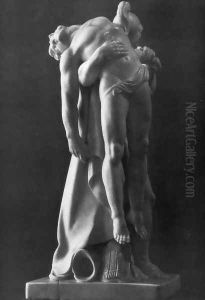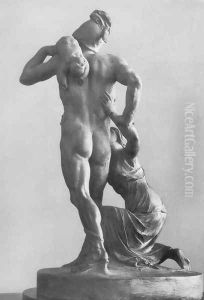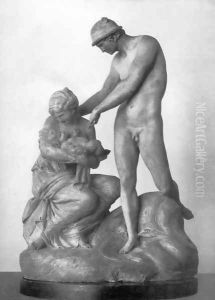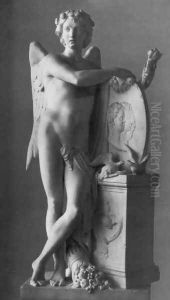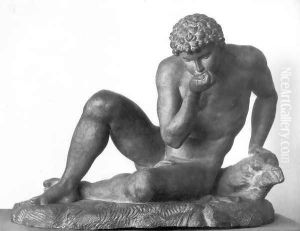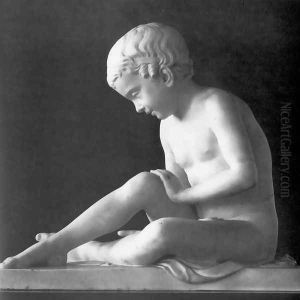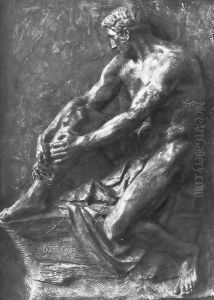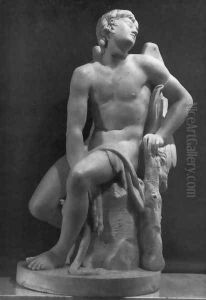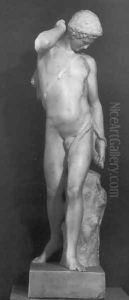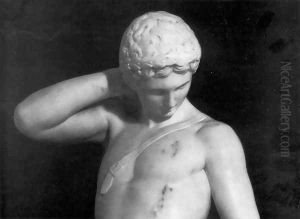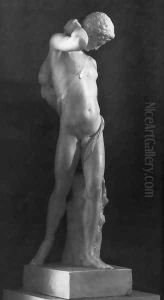Mikhail Kozlovski Paintings
Mikhail Kozlovski was a prominent Russian sculptor of the late 18th and early 19th centuries, whose work marked a significant transition in Russian sculpture from the Baroque and Rococo styles to Neoclassicism. Born in 1753, Kozlovski's early life is somewhat obscure, but his artistic talent became evident at a young age. He was sent to study in Rome at the expense of the Russian Imperial Court, a common practice for talented artists of the period, which allowed them to absorb European artistic traditions and techniques.
In Rome, Kozlovski was heavily influenced by the works of ancient Roman sculpture, as well as by the contemporary Neoclassical movement, led by artists such as Antonio Canova. Kozlovski's work began to reflect a blend of his Russian heritage with the classical ideals of beauty, harmony, and simplicity. Upon returning to Russia, Kozlovski became a central figure in the transformation of Russian sculpture. He worked on various projects, including statues, busts, and reliefs, for the Russian nobility and for public monuments.
One of Kozlovski's most famous works is the statue of Samson Rending the Lion's Jaw, created for the Grand Cascade of the Peterhof Palace, a symbol of Russia's victory over Sweden in the Great Northern War. This work exemplifies Kozlovski's mastery of dynamic composition and his ability to infuse his subjects with emotional depth and vigor.
Despite his success, Kozlovski's career was not without challenges. The changing political and social climate of Russia, coupled with the evolving tastes in art, meant that he had to continuously adapt his style and subjects to maintain his relevance and patronage. Kozlovski's contributions to Russian art were not limited to his own creations; he was also an influential teacher, passing on the principles of Neoclassicism to a new generation of Russian artists.
Mikhail Kozlovski died in 1802, leaving behind a legacy that had a lasting impact on Russian sculpture. His works continue to be celebrated for their technical skill, emotional expression, and the pivotal role they played in the transition of Russian art to the Neoclassical style. Kozlovski's life and career exemplify the journey of an artist deeply rooted in his own culture yet profoundly influenced by the broader currents of European art, making him a key figure in the history of Russian sculpture.
